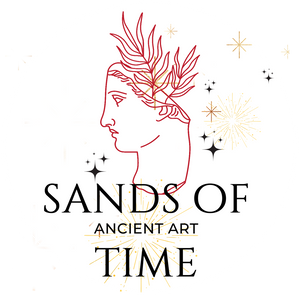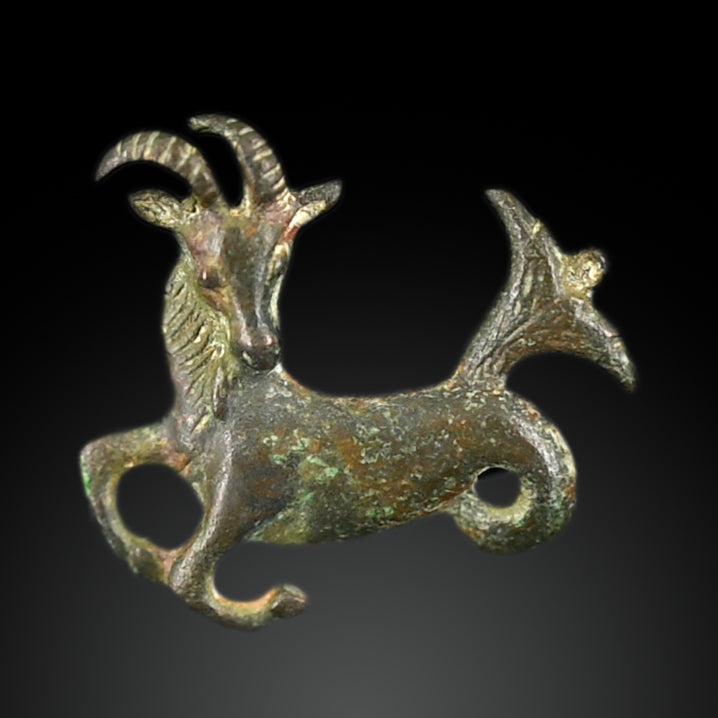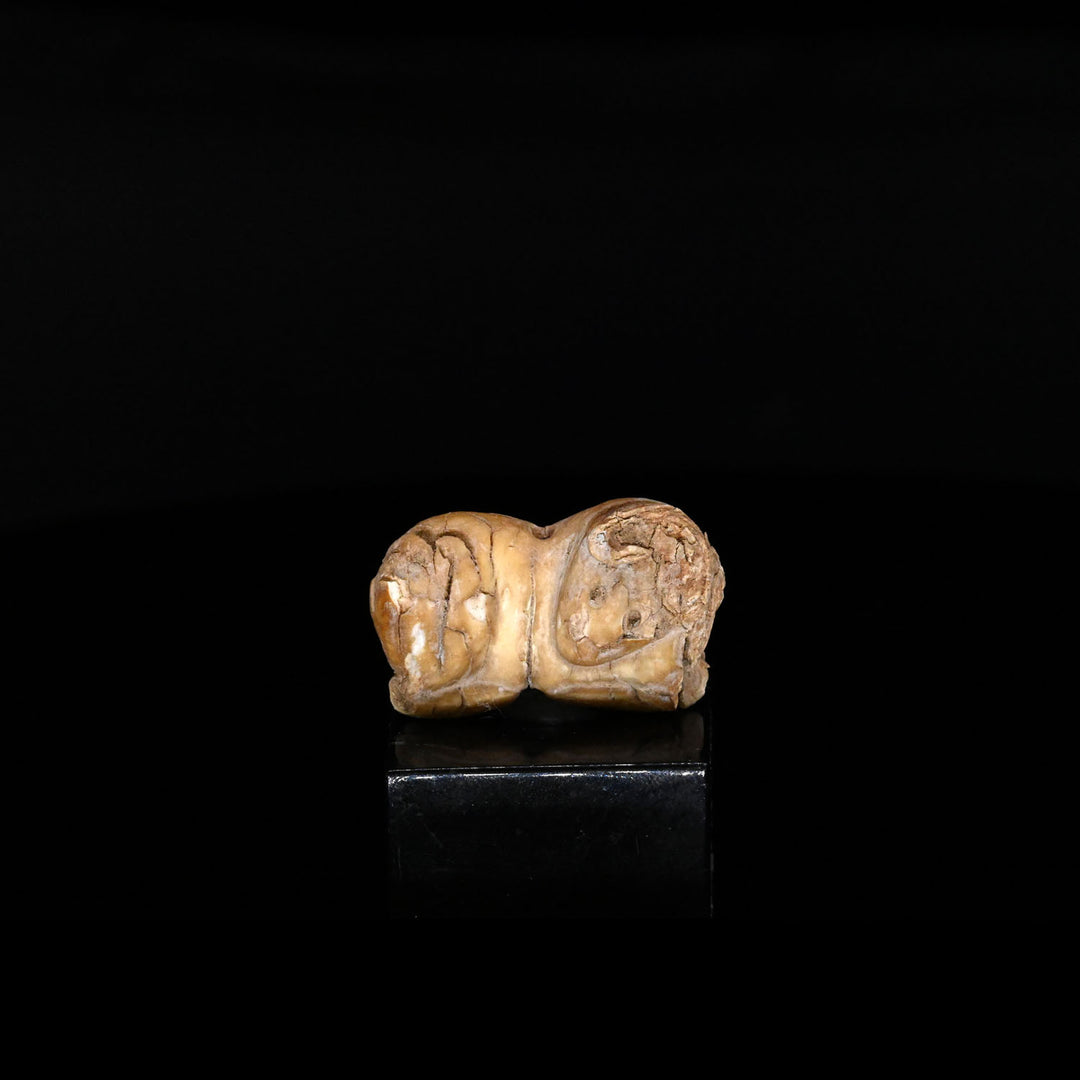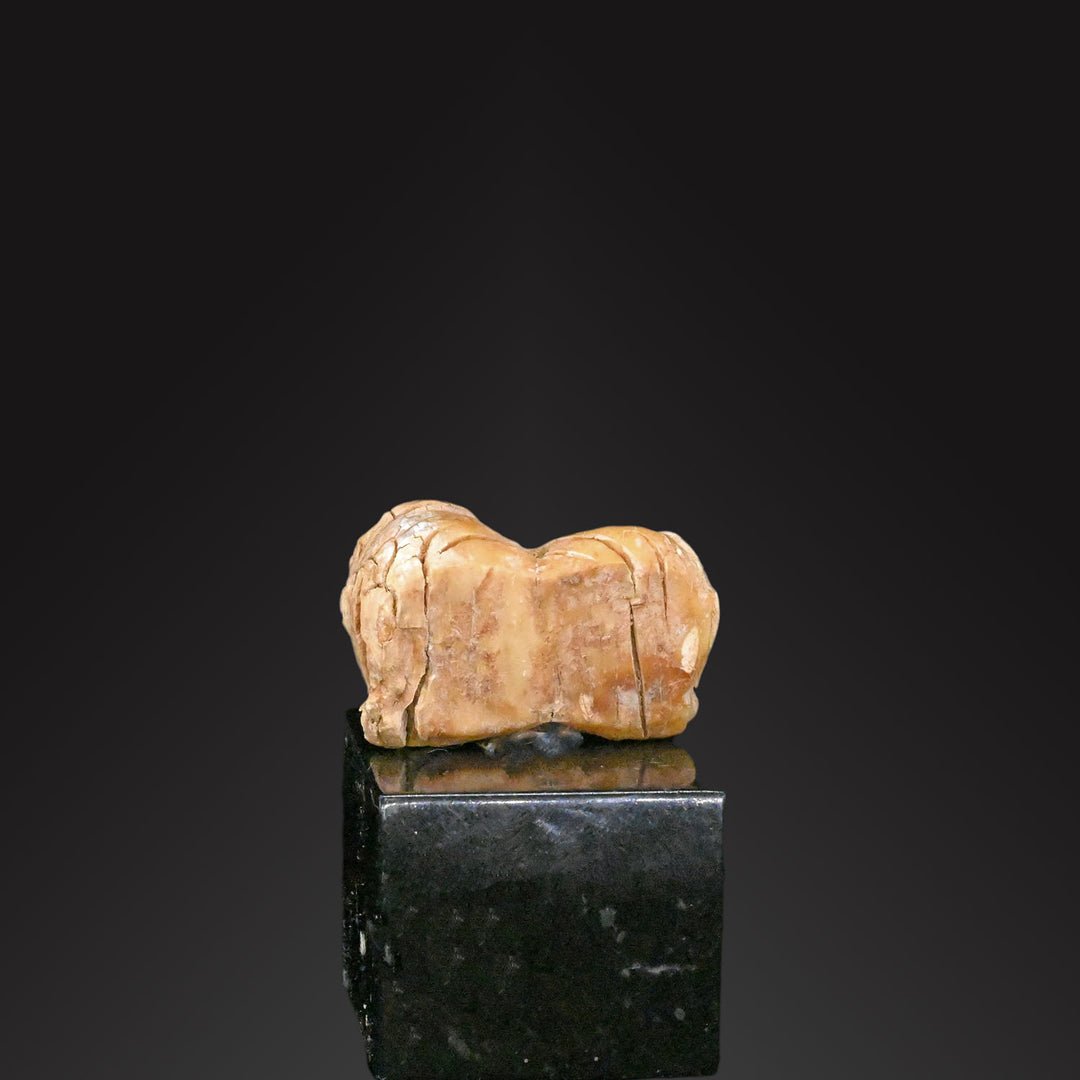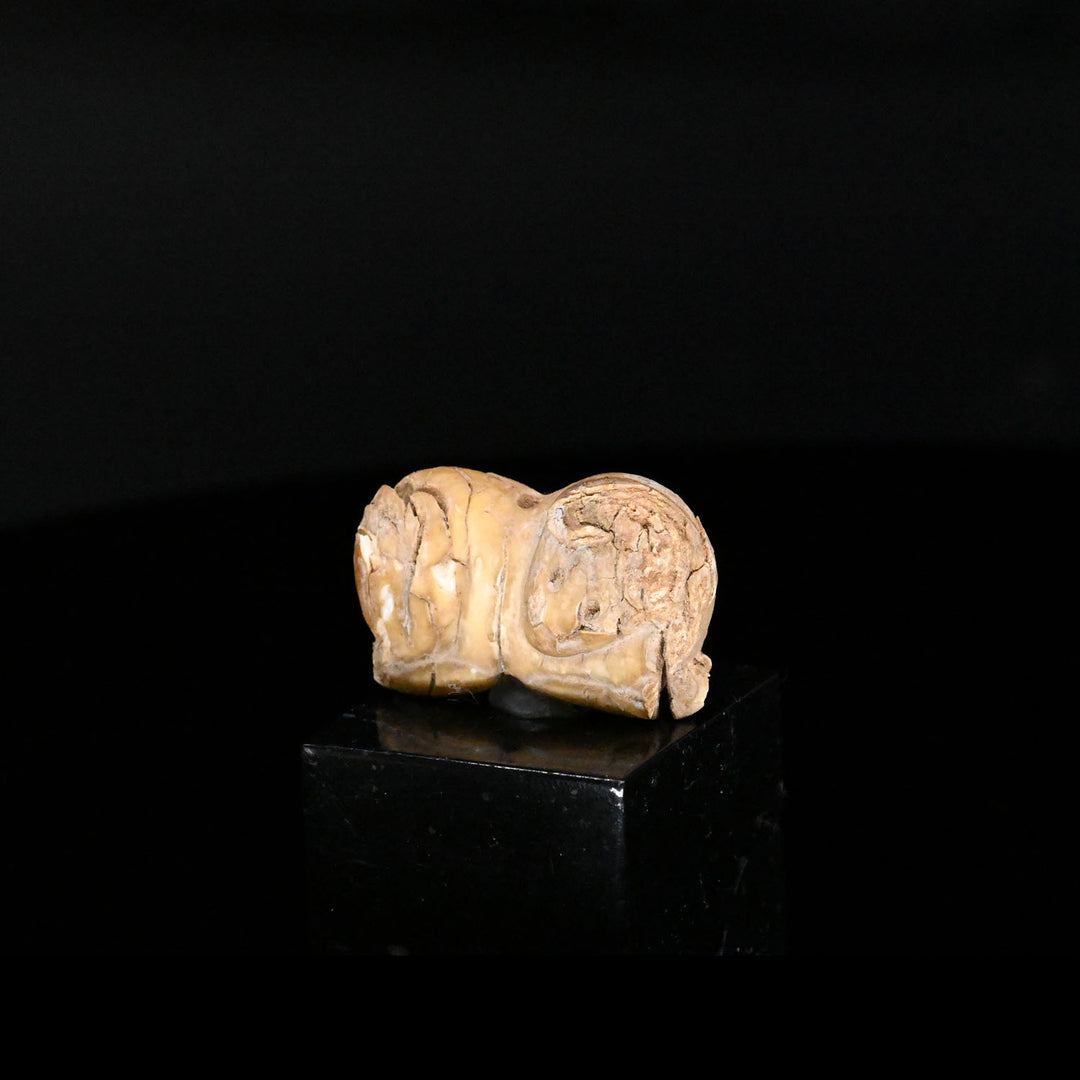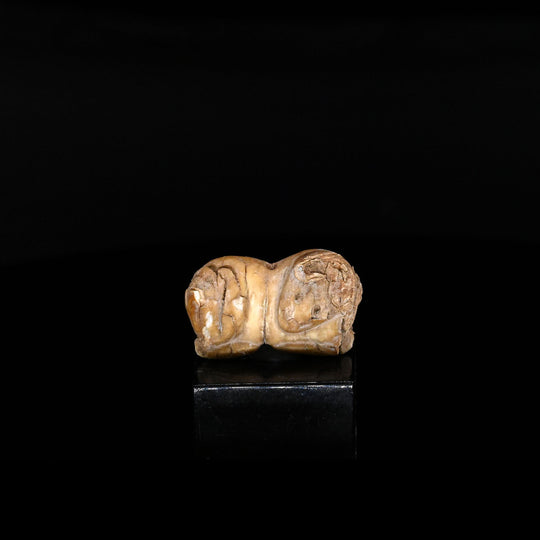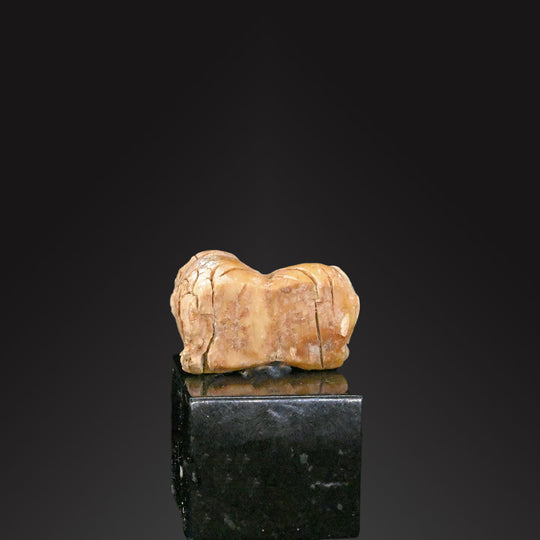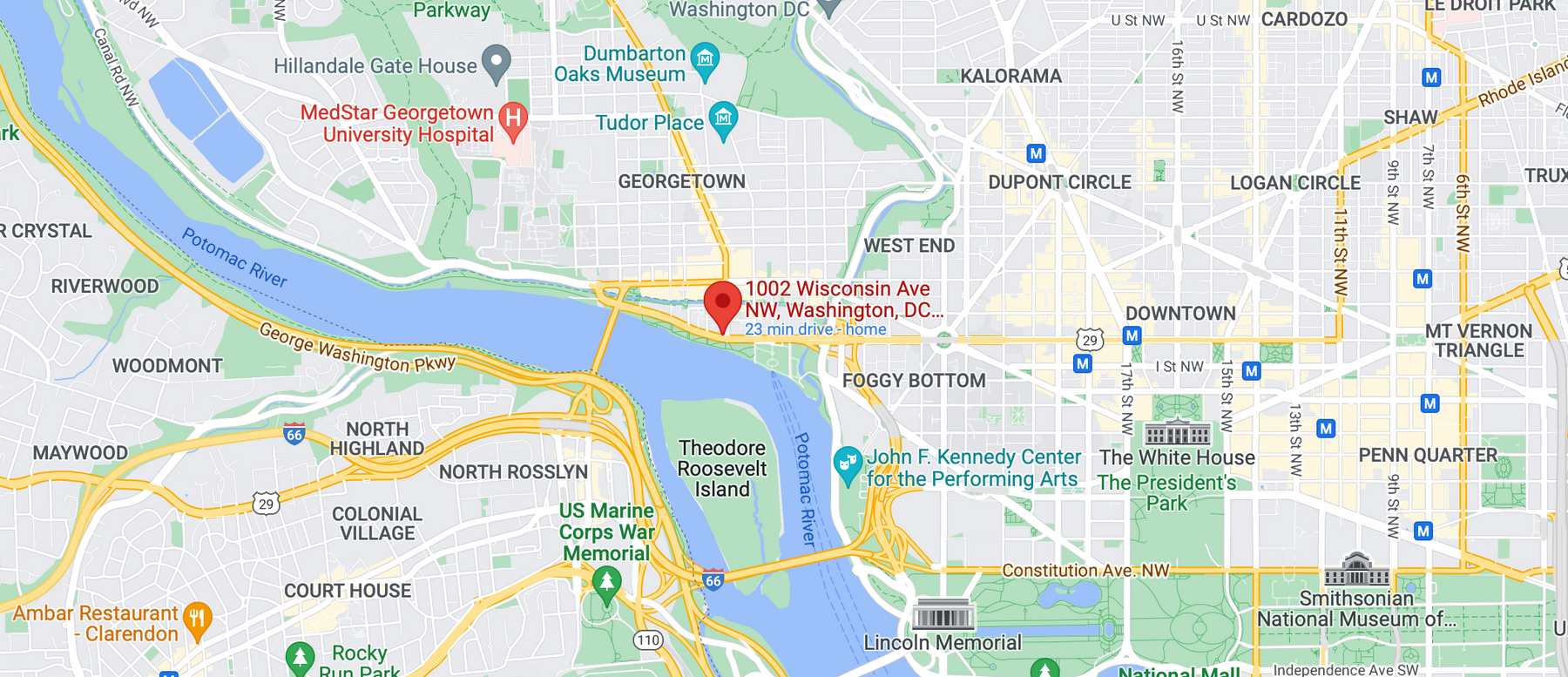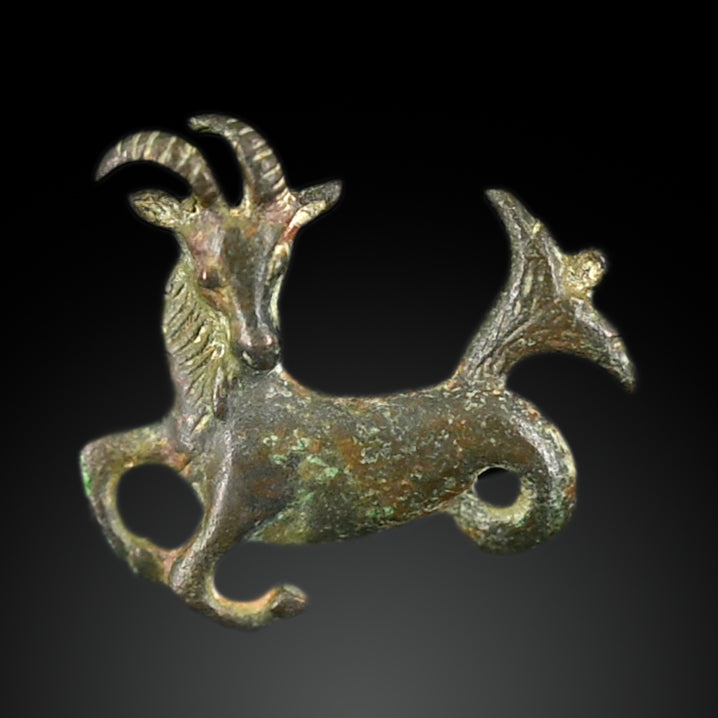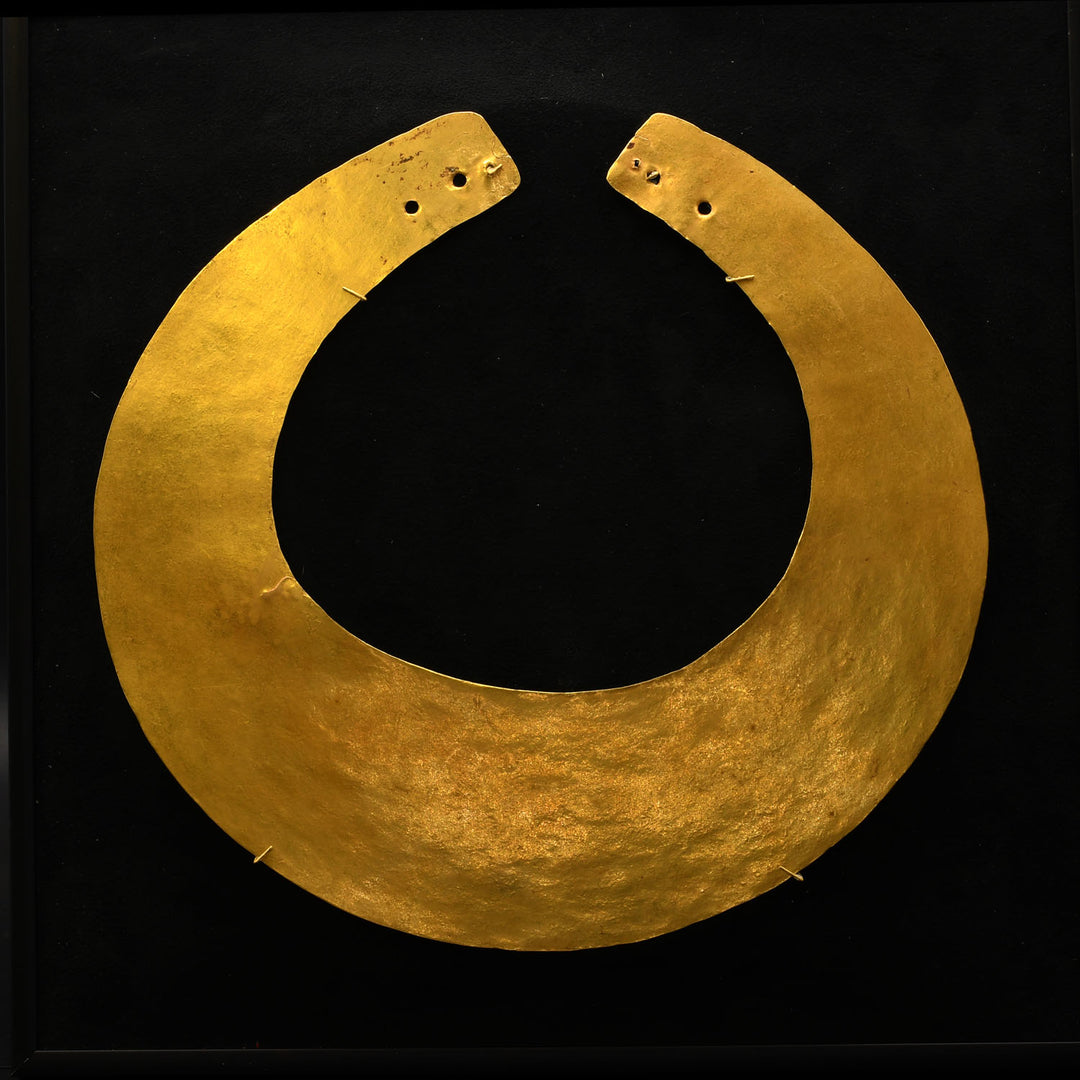A Sumerian Shell Amulet of a Recumbent Bull, Middle Gawra Period, ca. 3500 - 3300 BCE
MA2220
- This object qualifies for free USA shipping and a flat rate fee of $60 if shipping internationally.
Background: For the early Sumerians the bull symbolized divinity and power. Their chief gods Enlil and Enki would be honored as the “Great Bull” in song and ritual, and bulls would occasionally be represented on stamp seals with the gods. Images of bull sacrifice have also been found engraved on Sumerian seals. The scenes depicting a bull being stabbed in the throat could be the first evidence of bull sacrificial rites in history. Representations of human-headed bulls, as well as bull-headed humans, have also been found. These hybrid representations may symbolize the dominance of man over wild animals or the power of intelligence over man’s animal instincts.
For related examples see: E. Moller, Ancient Near Eastern Seals in a Danish Collection, Copenhagen, 1992, pp. 10-18, nos 1-26.
E. Gubel (ed.), A l'ombre de Babel: L'art du Proche-Orient Ancien dans les collections belges, Bruxelles, 1995, p. 41, no. 12.
Harvard Art Museum Object no: #1931.162.6
Condition: losses to the surface and cracked in several places but otherwise stable, intact and in good condition overall.
Dimensions: Length: 1 7/8 inches (4.8 cm)
Provenance: Collection of Mr. and Mrs. Robert Feuer, NY., acquired 1970s - 1980s.
Sands of Time provides a lifetime, unconditional guarantee of authenticity and provenance. Every object you purchase from us is accompanied by a Certificate of Authenticity, stating culture, provenance, and age.
Furthermore, we conduct due diligence to ensure the item, to the best of our knowledge, has not been illegally obtained from an excavation, architectural monument, public institution, or private property. Wherever possible, reference is made to existing collections or publications.Wherever possible, reference is made to existing collections or publications.
We ship Tuesday to Friday with FedEx and usually same day if your order is received before 2pm. Within the continental USA, packing, shipping and insurance is free. Depending on size and destination, delivery times range from one to five business days.
For overseas shipments we charge a small flat rate which includes packing, preparation of all customs paperwork, insurance and carrier fees in compliance with all USA and International customs requirements. Overseas shipments are sent using either USPS Priority Mail or FedEx but contact us if you have a shipping preference. International customers are responsible for all duties and taxes.
